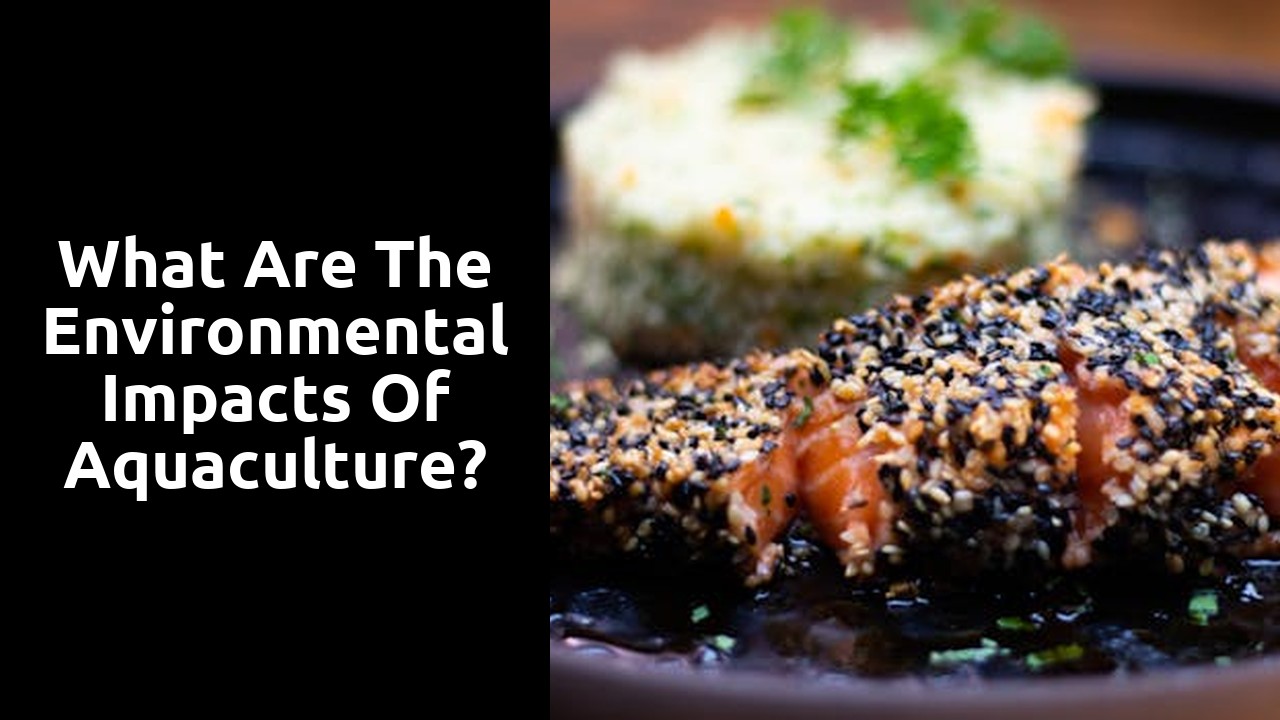What Are the Environmental Impacts of Aquaculture?

Waste Production
Aquaculture, while crucial for meeting the global demand for seafood, inevitably generates a significant amount of waste. The waste produced by fish farms includes uneaten food, excrement, and other organic matter that accumulates in the water. This excess organic material can lead to lowered oxygen levels in the water, causing harm to aquatic ecosystems and potentially causing algal blooms that further deplete oxygen levels and harm aquatic life.
Furthermore, the build-up of waste in aquaculture systems can create an environment conducive to the growth of harmful bacteria and pathogens. This can pose risks not only to the farmed fish themselves but also to wild marine life in the surrounding areas. Proper waste management strategies, such as improved feed efficiency, regular cleaning of aquaculture systems, and the use of natural biological filters, are essential to mitigate the environmental impact of waste production in aquaculture.
Accumulation of Organic Matter
Aquaculture, while providing a significant source of seafood, also contributes to the accumulation of organic matter in aquatic systems. Excessive feeding and the discharge of uneaten food, faeces, and dead organisms from aquaculture operations can lead to an increase in organic matter within the surrounding waters. This accumulation can result in oxygen depletion and the creation of dead zones, impacting the ecological balance of the aquatic environment and threatening the survival of native species.
The build-up of organic matter in aquaculture systems can also lead to the proliferation of bacteria and harmful pathogens, posing risks to both aquatic ecosystems and human health. As organic matter decomposes, it releases nutrients such as nitrogen and phosphorus, which can fuel algal blooms and contribute to water quality degradation. The presence of excess organic matter not only disrupts the natural habitat of marine organisms but also increases the likelihood of disease outbreaks among farmed fish, further exacerbating the environmental impacts of aquaculture operations.
Escapes of Farmed Fish
Farmed fish escapes are a serious concern in aquaculture due to their potential impact on wild fish populations. When farmed fish escape from fish farms, they can introduce diseases and parasites to wild fish, which can devastate local ecosystems. These escaped fish can also interbreed with wild fish, leading to genetic dilution and loss of genetic diversity within wild populations.
Escapes of farmed fish can also result in competition for resources, such as food and space, between farmed and wild fish. This competition can disrupt local ecosystems and threaten the survival of native species. Additionally, escaped farmed fish can alter the behaviour of wild fish, affecting their natural patterns of migration and reproduction. Efforts need to be made within the aquaculture industry to prevent fish escapes through improved infrastructure and better management practices.
Interaction with Wild Populations
Aquaculture operations have raised concerns about potential interactions between farmed fish and wild populations. These interactions can lead to various ecological consequences, including genetic dilution of wild stocks, competition for resources, and transmission of diseases. As farmed fish may escape from their enclosures, they can interbreed with wild fish, altering the genetic integrity of wild populations. This genetic mixing may reduce the overall fitness and adaptability of wild fish, impacting their ability to survive in changing environments.
Escapes of farmed fish can also result in competition for food and space with wild populations. In situations where farmed fish outcompete wild fish for resources, it can disrupt the delicate balance of ecosystems. Additionally, farmed fish can introduce diseases to wild populations that may not have immunity to these new pathogens. These diseases can spread rapidly among wild fish, leading to mass mortality events and further endangering already vulnerable populations.
Energy Consumption
Energy consumption in aquaculture is a critical aspect to consider when assessing its environmental impact. The energy demands of aquaculture operations are vast, encompassing various stages from hatchery management to fish processing. Electricity and fuel are the primary sources of energy used in aquaculture facilities. These energy requirements contribute significantly to the overall carbon footprint of the industry.
Efforts to streamline energy usage in aquaculture are essential to mitigate its environmental consequences. Implementing energy-efficient technologies, such as recirculating aquaculture systems and renewable energy sources like solar power, can help reduce the sector's reliance on traditional energy sources. Furthermore, strategic management practices, such as optimising feeding regimes and improving water quality monitoring, can contribute to decreasing overall energy consumption in aquaculture operations.
Carbon Footprint of Aquaculture Systems
Aquaculture systems, whilst producing valuable seafood, also contribute to the carbon footprint of the food industry. The energy-intensive nature of maintaining fish farms, including the operation of pumps, aerators, and heating systems, all adds to their environmental impact. Carbon emissions are generated not only directly by these operations but also through the production and transportation of feed for the farmed fish.
In order to address the carbon footprint of aquaculture systems, researchers and industry experts are exploring various strategies. These include investing in renewable energy sources to power aquaculture operations, improving feed efficiency to reduce emissions associated with feed production, and implementing technological advancements to make aquaculture systems more sustainable. Collaboration between stakeholders is essential to finding innovative solutions to mitigate the carbon footprint of aquaculture and move towards a more environmentally friendly seafood production industry.
Related Links
Why Sustainable Aquaculture Practices MatterWhat Are the Best Aquaculture Practices for Sustainability?
Roundup of Sustainable Aquaculture Practices
Review of Aquaculture Certification and Labeling
5 Sustainable Aquaculture Practices You Should Know
The History of Aquaculture Practices
Why Aquaculture Environmental Impact Should Be Considered